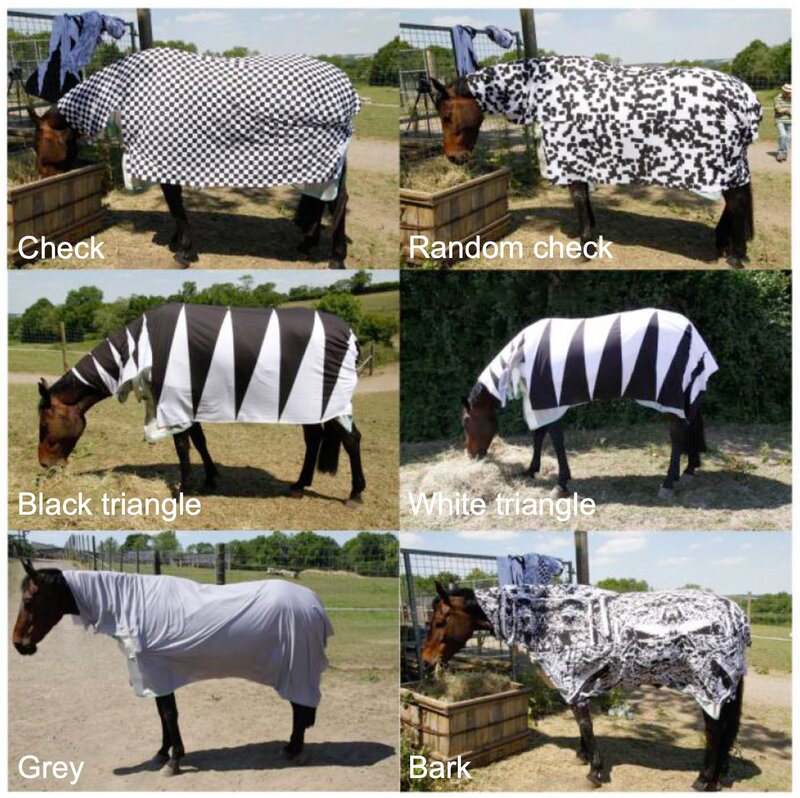「シマウマ」がゼブラ柄なのは「アブ」に刺されないためだった?
シマウマが、なぜゼブラ柄なのかにはいくつか仮説がある。今回、英国の研究チームが、その謎に迫る論文を発表した。
議論されてきたゼブラ柄の謎
シマウマがゼブラ柄の理由について、これまでいくつか仮説が唱えられてきた(※1)。例えば、ゼブラ柄が身体をより大きく見せるなどの錯覚により、ライオンなどの捕食者に襲われにくくするからという捕食回避説(※2)、ゼブラ柄が発汗による蒸発熱の効率的な放出をうながすという体温調節説(※3)、あるいは社会的なコミュニケーション説(※4)などがある。
これらの仮説は、ダーウィンの頃から100年以上も議論されてきた。この中で現在、支持されているのは、ゼブラ柄が捕食者の目をごまかしたり、吸血性の昆虫から回避する機能を持っているのではないか、という説(※5)だが、特に昆虫回避説が最近になって注目されている。
アブやハエ、カなどの吸血性の昆虫は、ヒトはもちろん家畜や野生生物にとって重大な感染症を媒介し、特にメスのアブはウマやウシなどの血を吸うため、家畜類を悩ませ、搾乳の生産量を減らすなどする(※6)。
一方、吸血性のアブの行動が、光の反射によって影響を受けるという研究がある。アブ類は水辺で産卵するため、水の反射光によって産卵場所を探すからだ(※7)。
ウマにシートをかぶせてみた
そのため、ホルスタイン柄のようなウシの柄が、アブの光の反射反応へ影響をおよぼし、刺されにくくしているのではないかという研究がある(※8)。この研究によれば、明暗がはっきりしていて光の反射にむらがあると、アブがそれを嫌うのではないかとしている。
ここ数年、シマウマのゼブラ柄とアブの行動に関する研究が多く出されている(※9)。今回、英国のブリストル大学の研究チームが、実際にウマに様々な柄のシートをかぶせ、アブの行動変化を実証実験し、その結果を発表した(※10)。

同研究チームによれば、アブが最も嫌うのが、はっきりした規則的なゼブラ柄ということがわかったという。また、遠方からのアブの接近より、至近距離でゼブラ柄の効果は高い。逆に、全体が黒っぽいもの、全体がグレーは、むしろアブを引き寄せ、三角形柄やチェス盤のような市松模様にはアブを遠ざける効果はなかった。
これは他の仮説にも共通する疑問だが、ではなぜシマウマ以外の草食動物はゼブラ柄になっていないのだろうか。
ブリストル大学のリリースによれば、同研究チームはその理由について、アフリカのサバンナに生息する有蹄類の中で、シマウマが最もアブに悩まされているからではないかとし、この謎についてはこれからも研究が必要だと述べている。
※1:Brenda Larison, et al., “How the zebra got its stripes: a problem with too many solutions” ROYAL SOCIETY OPEN SCIENCE, Vol.2, Issue1, 1, January, 2015
※2-1:Graeme D. Ruxton, “The possible fitness benefits of striped coat coloration for zebra” Mammal Review, Vol.32, Issue4, 237-244, December, 2002
※2-2:Martin J. How, Johannes M. Zanker, “Motion camouflage induced by zebra stripes” Zoology, Vol.117, Issue3, 163-170, June, 2014
※3:Alison Cobb, Stephen Cobb, “Do zebra stripes influence thermoregulation?” Journal of Natural History, Vol.53, 13-14, 13, June, 2019
※4:J. Kingdon, “The zebra’s stripes: an aid to group cohesion” The encyclopedia of mammals, 486-487, 1984
※5:Tim Caro, et al., “The function of zebra stripes” nature communications, Vol.5, Article number: 3535, 1, April, 2014
※6-1:L D. Foil, “Tabanids as vectors of disease agents” Parasitology Today, Vol.5, Issue3, 88-96, March, 1989
※6-2:Marc Desquesnes, et al., “Trypanosoma evansi and Surra: A Review and Perspectives on Origin, History, Distribution, Taxonomy, Morphology, Hosts, and Pathogenic Effects” BioMed Research International, https://doi.org/10.1155/2013/194176, 19, August, 2013
※6-3:Federic Baldacchino, et al., “Transmission of pathogens by Stomoxys flies (Diptera, Muscidae): a review” Parasite, Vol.20, 29, August, 2013
※7-1:Gabor Harvath, et al., “Ventral polarization vision in tabanids: horseflies and deerflies (Diptera: Tabanidae) are attracted to horizontally polarized light” Naturwissenschaften, Vol.95, 1093-1100, 7, August, 2008
※7-2:Gabor Harvath, et al., “Linearly Polarized Light as a Guiding Cue for Water Detection and Host Finding in Tabanid Flies” Polarized Light and Polarization Vision in Animal Sciences, 525-559, 1, January, 2014
※8:Miklos Blaho, et al., “Spottier Targets Are Less Attractive to Tabanid Flies: On the Tabanid-Repellency of Spotty Fur Patterns” PLOS ONE, doi.org/10.1371/journal.pone.0041138, 2 August, 2012
※9:Peter Takacs, et al., “Sunlit zebra stripes may confuse the thermal perception of blood vessels causing the visual unattractiveness of zebras to horseflies” scientific reports, Vol.12, Article number: 10871, 4, August, 2022
※10:Tim Garo, et al., “Why don’t horseflies land on zebras?” Journal of Experimental Biology, Vol.226(4), jeb244778, 17, February, 2023


